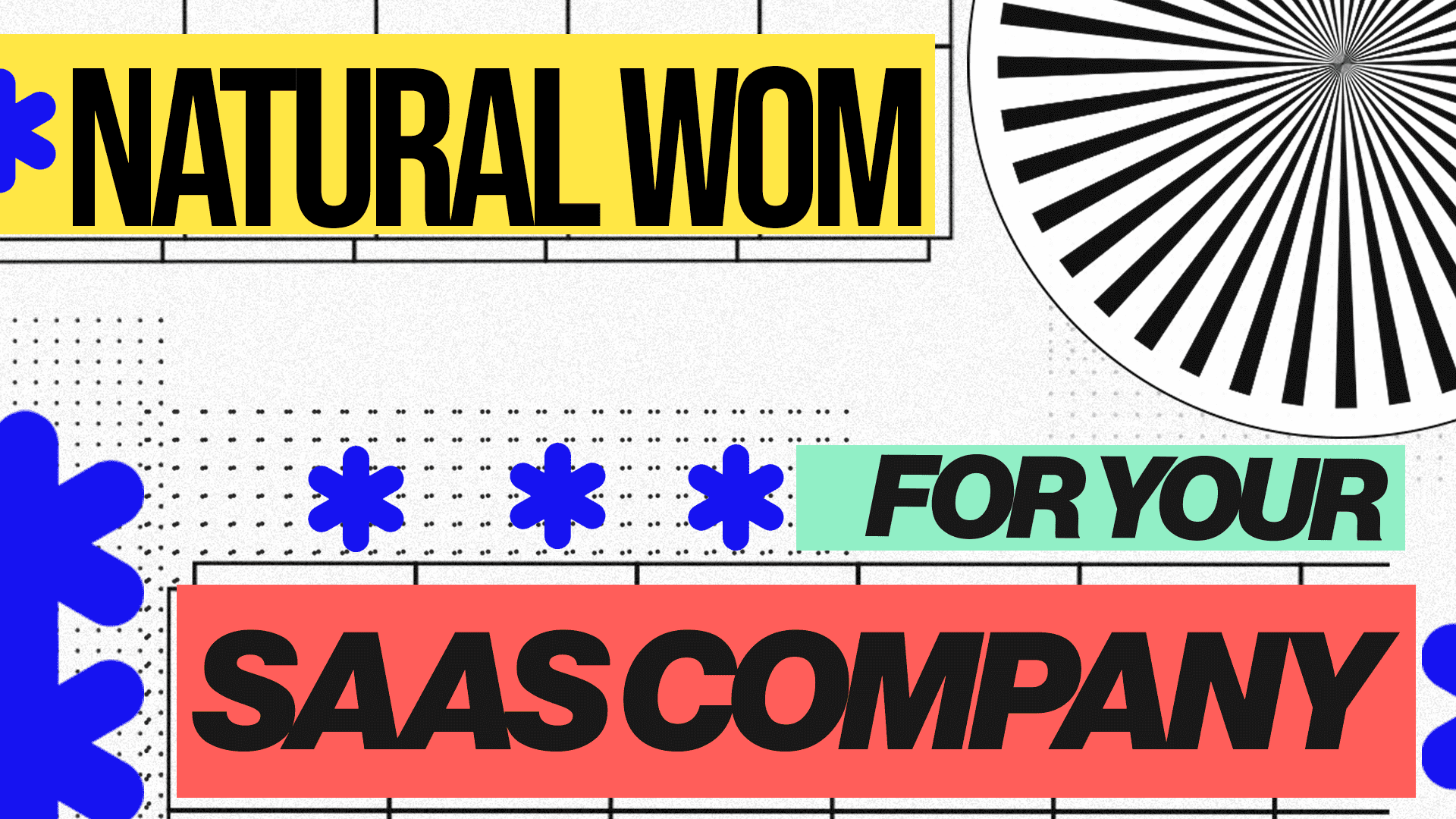So you’ve put your heart and soul into crafting that amazing, one-of-a-kind SaaS product that’s supposed to take the world by storm. You’ve thrown every marketing trick you can think of at it—SEO, PPC, social media ads, you name it!
Yet, here you are, watching growth trickle in like molasses. Frustrating, right? It’s like aiming for the moon but only managing to hit a distant star.
What gives? You might be wondering why word of mouth isn’t kicking in. Is it the product? The marketing? Or maybe you just need to shake things up a bit. Sometimes, despite all the effort, it feels like you’re trying to push a boulder uphill.
Now, think of a scenario where your customers are so thrilled with your product that they can’t stop talking about it. They spread the word effortlessly, driving a steady stream of new customers to your platform, ready to sign up.
This is the magic of natural word-of-mouth (WOM) marketing, where your users become your biggest brand advocates. It’s what makes WOM different—not only cost-effective but also incredibly credible.
Sounds like a dream! It’s also possibly your best solution.
Are you in? Of course, you are!
But before we dive in to how you can utilize it, let’s talk about the challenges first. After that, we’ll outline how word-of-mouth can provide the answers to these challenges and what are the appropriate steps.
Ready? Let’s do it.
Challenges of Promoting Your SaaS Tool
The challenge, really, is not just about having a great product. Your tool might be slick, user-friendly, and solves a problem like nothing else out there. But breaking through the noise of those long-existing competitors and getting people to actually use it is the tricky part.
Right now, you’re likely faced with the following issues:
High Customer Acquisition Costs
First off, let’s talk about the wallet-draining monster that is customer acquisition. You pour your heart (and budget) into marketing campaigns, but the returns? Sometimes, they’re more elusive than Bigfoot in a fog bank.
Here’s how much the average customer acquisition costs (CAC) for SaaS is based on the customer type:
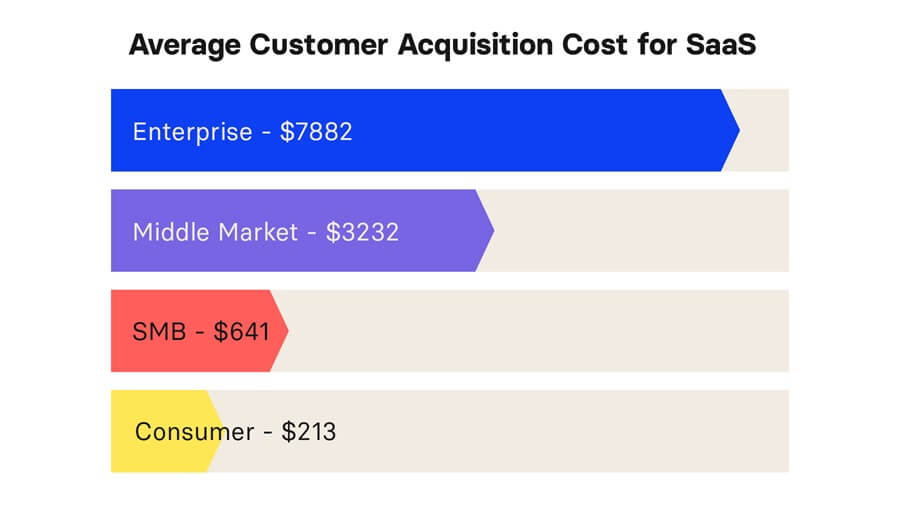
Check the full data on CAC based on the SaaS industry as compiled by FirstPageSage.
Imagine spending thousands on paid ads only to get crickets in return. Yeah, it hurts. Without a clear path to profitability, it’s tough to justify those expenses.
Market Saturation
Next up is market saturation. It’s like trying to shout in a crowded room where everyone else is also shouting. How do you make your voice (or product) stand out?
There are already a gazillion SaaS tools out there promising to revolutionize this or streamline that. Your challenge is not just to be good but to be visibly better. It’s akin to opening a new coffee shop right next to Starbucks and hoping for the best. Spoiler alert: it’s going to be rough.
Long Sales Cycles
Ah, the dreaded long sales cycles. Convincing potential customers to take the plunge can feel like waiting for paint to dry. SaaS buyers are cautious, often taking months to evaluate their options.
During this time, they’re comparing demos, reading reviews, and probably getting distracted by the next shiny new software. By the time they circle back to you, you might have already lit the victory cigar – prematurely, of course.
Customer Retention
Okay, let’s say you’ve managed to get customers through the door. Great! But now comes the next hurdle: keeping them around.
Attracting new customers might seem like the ultimate goal, but SaaS veterans know that retention is where the real game is played. A churn rate that’s higher than a caffeine-fueled squirrel can spell disaster.
Complex Onboarding
Finally, we come to complex onboarding. You might have the most amazing tool, but if your users can’t figure it out, they’ll abandon ship faster than a rat on a sinking vessel.
If the onboarding process works like deciphering ancient hieroglyphics, users will leave before they can realize their full potential.
Promoting a SaaS tool isn’t just about throwing money at ads or having a flashy website. It’s a multifaceted challenge that involves high costs, standing out in a crowded market, enduring long sales cycles, retaining customers, and ensuring a smooth onboarding experience.
By understanding these challenges and tackling them head-on, you can turn your SaaS tool from just another name in the crowd into a must-have solution for your target audience.
Benefits of Natural Word of Mouth for SaaS
Word-of-mouth (WOM) marketing is a big deal for any type of company, including the SaaS industry. So, how can natural word-of-mouth answer the challenges mentioned above? The answer lies in the following benefits of word-of-mouth:
It’s Cost-Effective.
Unlike paid ads that scream for attention, WOM quietly whispers the truth about your product’s greatness. In fact, it generates five times more sales than paid media, according to Invespro.
This is because 92% of consumers trust recommendations or suggestions from friends and family over any form of advertising). It’s like getting a personal endorsement from someone you know, which is more convincing than any slick ad.
One of the biggest hurdles for SaaS companies is the high cost of customer acquisition. But, with WOM’s cost-efficiency, the acquisition cost can be significantly reduced.
Customers Stay Longer.
Customers acquired through WOM tend to stick around longer. They’re not just casual users but loyal advocates who believe in your product. This means higher retention rates and lower churn, translating to steady revenue streams.
It Encourages Genuine Advocacy.
When people genuinely love your product, they become your advocates. This builds trust and credibility, which are crucial in today’s crowded market. A recommendation from a real user is far more convincing than any ad could ever be.
If a friend recommends you a product, you’re 77% more likely to give it a shot. That’s based on real-world data.
Just think about Slack and Zoom—they did not explode in popularity because of massive ad campaigns. Their growth is largely credited to WOM because people genuinely loved using them and told their colleagues about it.
The Ripple Effect of Influence Helps You Widen Your Reach.
On average, a single person can influence around 10 to 15 others in their immediate social circles when it comes to purchasing decisions. Five from the person’s tight circle, and up to 15 for close relations and/or good friends.

Image by Emmanuel Lafont.
This influence can stem from personal conversations, social media posts, or casual recommendations.
Now, imagine tapping into this potential. If just one enthusiastic customer shares their positive experience with your SaaS tool, they could indirectly reach dozens of people who trust their opinion.
As this viral loop continues, the effects multiply exponentially. For instance, if each of those 15 people shares their experience with another 10 people, you can quickly see how word-of-mouth can spread beyond your initial customer base, reaching hundreds, if not thousands, of potential new users.
WOM’s impact is not confined to local markets. It drives $6 trillion in annual global spending and accounts for 13% of all sales. That’s a staggering amount of influence on a global scale!
It Has Viral Potential.
A great product combined with positive word-of-mouth (WOM) can create a powerful viral effect.
Take HeadLime, for instance. Its founder, Danny Postma, would tease people about his project while still in the creation process. It got people so hyped up they re-tweeted his tweets over and over until launch day came. Suffice to say it was a smash hit!
Related Reading: How to Make Your Product Go Viral: 7 Tips (& Examples)
The success of such initiatives underscores the importance of building a strong community around a product or service. When customers are genuinely excited about what you offer, they become your most effective marketers. Their enthusiasm can lead to authentic conversations, social media shares, and recommendations that reach a vast audience.
For businesses, fostering a positive customer experience is crucial, as satisfied customers will naturally share their stories, attracting new users and creating a cycle of growth. In today’s digital age, where information spreads rapidly, leveraging positive WOM can be a game-changer for any brand.
How to Cultivate Natural Word of Mouth
Now that you know how WOM can benefit your SaaS company, the question is: How will you get started? What steps can you take to maximize the potential of natural word-of-mouth marketing?
Keep reading, and you’ll know the secret.
Encourage User Reviews
Asking for user reviews is a fantastic way to spark word-of-mouth (WOM) marketing. Positive reviews serve as powerful social proof, convincing potential customers to try your product and share their experiences with others. This can create a ripple effect, where satisfied customers recommend your brand to their friends and family, further amplifying your reach.
Additionally, user reviews play a crucial role in search engine ranking, making it easier for new users to discover and trust your brand. To encourage user reviews and harness the power of WOM marketing, you should:
- Incentivize Feedback
Offer discounts or exclusive access to features in exchange for honest reviews. Encourage users to share their experiences on platforms like Clutch, Capterra, Trustpilot, and G2 to broaden your reach and enhance your visibility through search engines.
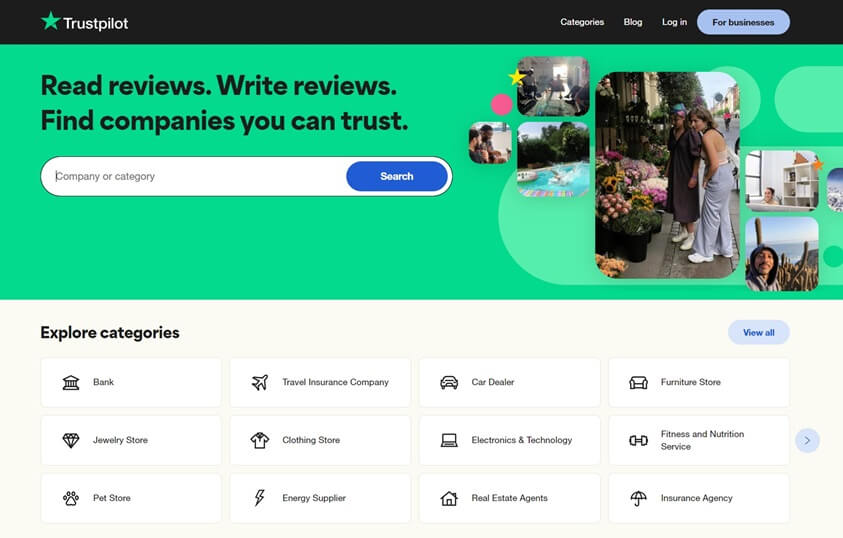
- Make it Easy
Simplify the review process with automated prompts and clear instructions. A seamless experience encourages users to share their thoughts with minimal effort, increasing the likelihood of WOM marketing.
- Follow Up
Send a follow-up email a few days after a customer has started using your service to ask for a review. You can also reach out after positive customer service interactions. Always include a direct link to your review page, making it easy for satisfied customers to spread the word!
Foster a Community
Building a community around your product can amplify WOM because you are giving them a platform to interact with each other. Platforms like Facebook and dedicated forums can be great places to start.
Always engage with your users, respond promptly to their queries, and create a welcoming space where they can share their experiences. To widen your reach, allow non-clients to take part by reading the threads/interactions and allowing them to ask questions.
This helps ramp up their interest even when they’re still getting ready to jump on board.
To make this work, you should:
- Create Engaging Spaces.
You can develop forums, social media groups, or in-app communities where users can share tips and experiences. You can also use integrations to interact with your users within your company website. This can create a lively “coffee shop” vibe where conversations flow naturally.
- Highlight User Stories.
Flex your user success stories and testimonials on your website and social media to build a sense of community and shared achievement.
- Engage Regularly.
Always interact with your community. Answer questions if there are some, participate in discussions, and show that you value their input and opinions. This fosters a sense of belonging and loyalty with your users. Besides, you can also use your current user’s input to improve your software.
Another advantage of having a community is you have a space to promote new offers or announce updates on your tools.
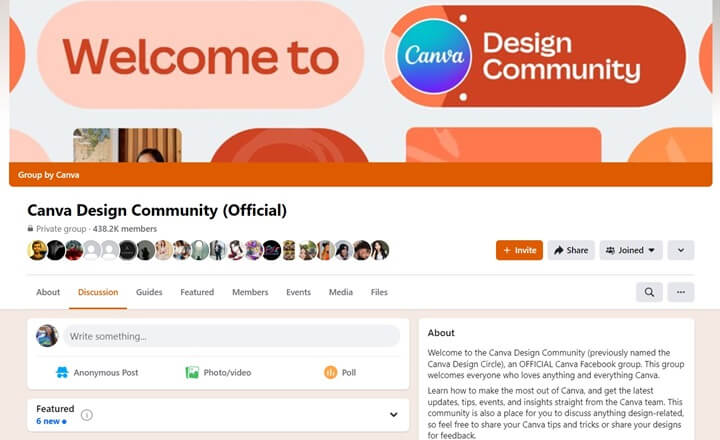
Encourage User-Generated Content
Even if it seems a bit difficult, try to encourage your customers to create content about your software. This can be in the form of blog posts, social media posts, updates, short testimonial videos, use-case videos, or even interviews.
Since it’s made by true people with genuine opinions, UGCs (User-Generated Content) are more trusted by potential customers and can significantly boost your brand’s visibility.
You may start by creating fun challenges that encourage your users to share their experiences while using their product. For example, you can ask them to share creative ways they use your product and feature the best submissions on your social media channels, like Facebook, and Instagram.
TikTok is notoriously good for such videos. They can even lead to viral popularity.
Here’s a great example of a user promoting SaaS Tools he’s tried:
@patticuscampbell Top SaaS tools that i use in business #productivitytools #saasproduct #entrepreneurs
Once someone submits a UGC, repost and celebrate your user’s content on your social media channels. It’s important to highlight these customer stories and success stories to showcase how your product impacts the real world and how it changes the game.
Without even prompting, the very same user will likely share with their peers about how their post was recognized, getting you more views and attention.
While the thought of being recognized by a brand is sometimes a reward itself for users, you can take it a step further. You can offer rewards or special gifts for your users who will upload their content for and about your product.
Hold Contests and Games
Let’s face it: everyone loves a good contest or game. Whether it’s the thrill of winning a prize or just the joy of participating, contests and games can be a powerful way to encourage word-of-mouth sharing among your current and potential customers.
Simple Steps to Get Started
- Plan Your Contest or Game
Decide on the type of contest or game that aligns best with your brand and audience. Make sure it’s something that genuinely excites your users.
- Promote Heavily
Promote your contest or game through all available channels—email, social media, your website, etc. The more eyes on it, the better.
- Make Participation Easy
Ensure that entering the contest or playing the game is straightforward. Complicated entry processes can deter participation.
- Require Social Sharing
Make sharing a part of the contest rules. Require participants to share the contest on any platform, tagging your company and using a specific hashtag. This amplifies your reach and ensures your message spreads far and wide.
- Reward Generously
Offer attractive rewards that motivate participation. These could be monetary prizes, free subscriptions, free upgrades, or exclusive perks.
Grammarly utilized contests to enhance WOM for their tool! We’ll talk more about that later.
For more useful info, make sure to check out our Youtube video on Rewards for your campaign!👇
Engage with Influencers
Having influencers as partners can help you spread the word about your product to a broader audience.
But you can just go for any popular or trending personality at the moment. Look for influencers who align with your brand values and those who already have a strong following in your target market.
Notion did this really well! They didn’t even have to pay influencers with cold, hard cash; instead, they offered them exclusive benefits and formed a community that influencers couldn’t get enough of. They regularly post tutorials on how to use Notion, which gets good engagement.
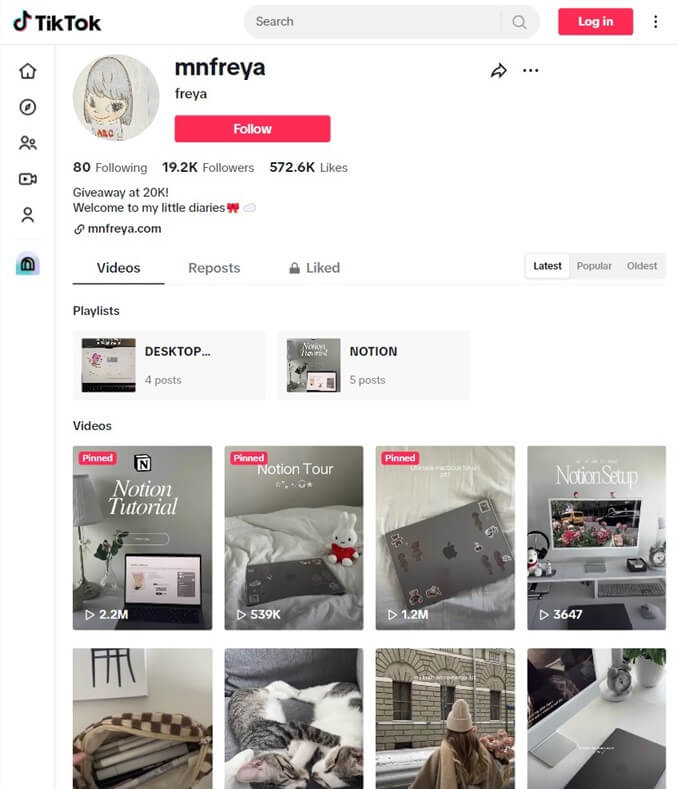
To make this work for your own company, make sure you partner with influencers who are known for creating authentic and engaging content so that they may do the same for your software. Ask them to highlight your product’s benefits.
These collaborations can be guest blog posts, social media takeovers, joint webinars, virtual events, tutorials, and so on. Just like any other marketing campaign, you have to monitor the performance of each of your influencer collaborations.
You can still go the paid route though, especially if you are still introducing your tool to the world and are yet to find ambassadors eager to promote you. Work with them through platforms like Brandbassador and Collabstr.
Create an Irresistible Referral Program
This is one of the best ways to turn your existing customers into your best marketers.
Your happy customers or users can willingly refer your software to anyone—and giving them rewards should not hurt, right? You may offer them cash bonuses, service credits, and exclusive features.
Note: We keep mentioning rewards here, but for a deeper discussion on incentives, head over to this guide on How to Choose Referral Rewards and Referral Incentives.
These rewards can motivate them to bring in more users who will sign up. There are a couple of key things to remember, though. You should:
- Offer Unique Rewards.
Design your referral program with enticing rewards. Take Dropbox, for example, when they offered extra storage space for both the referrer and the referred. You can also consider offering a free month of service or a big discount for each successful referral.
- Promote It Widely.
To maximize reach and participation, make sure that your referral program is exposed in your app, emails, website, and social media pages. You can do email campaigns and in-app notifications to remind your users about the referral program.
Building a referral program for SaaS tools and companies has its own unique quirks. Learn more on how to do it in our full guide on How to Build a SaaS Referral Program (& Great Examples).
Author’s Note: While we’re on the subject of rewards in referral programs, we can finally announce our latest feature!
Now, with Viral Loops Rewards all accounts are fully equipped to connect and send actual rewards. That’s right! Through our latest integrations with Stripe and Tremendous, sending out gifts takes no time. This makes the process for creating your next referral campaign a breeze!
Offer Free Trials or Provide Free Plans (Freemium)
Everyone loves free stuff. Who doesn’t? Offering free trials allows your potential users to experience your product’s value without making them spend on any initial investment except for time. And if eventually they like what they see, they’ll be more likely to share it with others.
If your product is made for company use, you can get the target user in the company to try it for a short time. Then, you can give them a template for a letter of approval from the company to help them convince them of its significant value.
You can let your users access your product’s premium features, allowing them to see the full value of your product. Clearly communicate and reiterate the benefits of using it.
But this freemium model already allows them to get a taste of what your product can do and encourages them to upgrade for more advanced features.
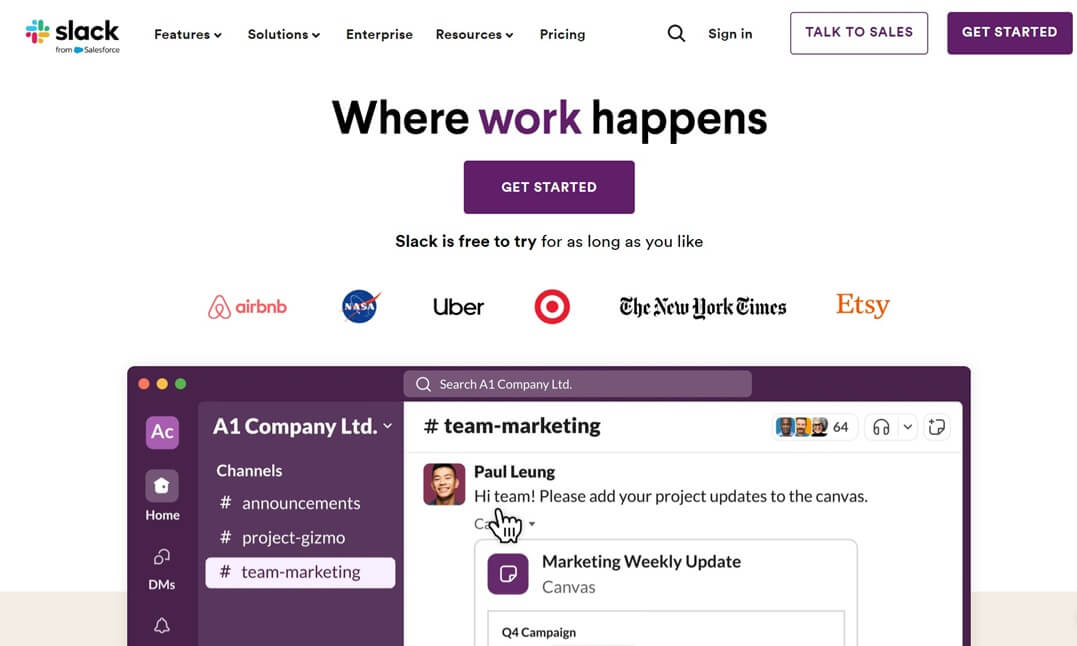
Free service does not mean that you will also be free from the obligation of supporting your users. Ensure that they have all the support they need, even during the trial period.
You can set up onboarding emails to guide them through the features, prepare an FAQ page or a knowledge base on your website, and always keep your customer service as accessible as possible to help them get the most out of your product.
Monitor and Respond to Online Reviews
Whether you’re a starting brand or a veteran, it’s important to keep an eye on your brand’s reputation. Don’t be selective and address all issues at hand! Respond to both your positive and negative reviews promptly and politely.
You can take Amazon as an example. Even if they are already an e-commerce giant, they still take online opinions like tweets seriously, and they respond quickly! This shows that they still care about customer feedback. Just like firefighters, extinguishing a small spark that, if not taken care of—can turn into a wildfire.
- Timely Responses.
Show your users that you value their feedback by responding quickly to reviews. This can showcase how you commit and prioritize customer satisfaction and ultimately helps build trust.
- Address Issues.
Do not take negative reviews negatively, as these can make or break you. Use them as an opportunity to improve your software and service. Don’t forget to thank them for their input and outline the steps you’re taking to address their concern. By doing this, you can turn a negative experience into a positive one for both your product and your user.
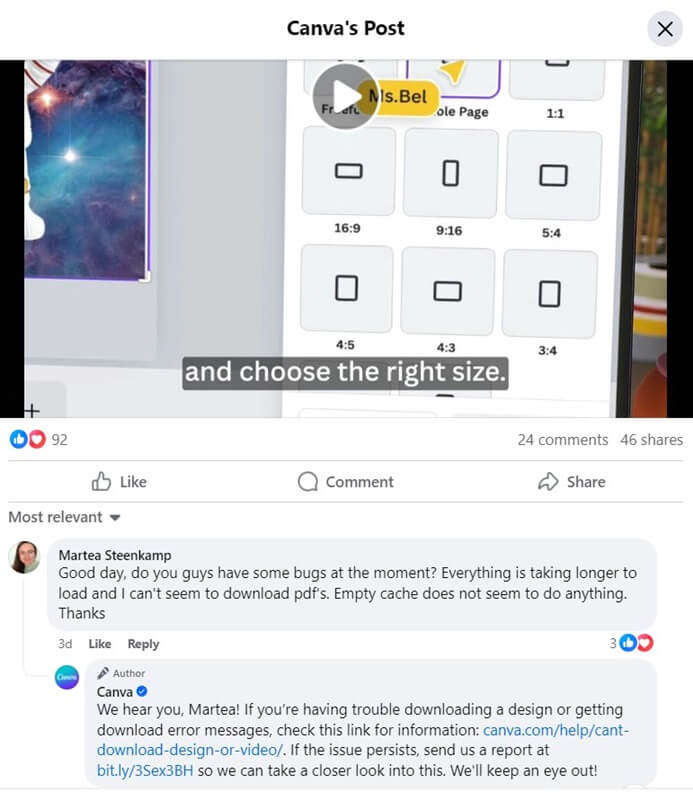
- Encourage Positive Reviews.
When your users show a sign or express satisfaction with your product, take it as the chance to encourage them to share their positive experiences online. You may also repurpose it to showcase it on your social media, or the testimonial section of your website. This will help you balance any negative reviews and improve your overall rating.
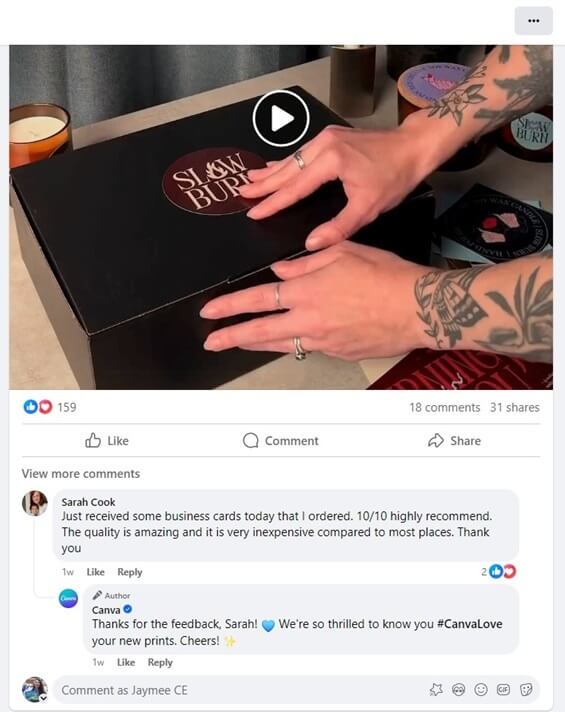
Keep Talking About Your Product
Alright, let’s chat about why keeping your users in the loop about what your product can do is super important. If you want to keep them engaged and interested, consistent communication is key! It’s like dating—if you don’t text them about your latest adventures, they’ll start to lose interest, right?
So, what’s the game plan? Companies should regularly brag about their product’s capabilities and create a mix of content to highlight its uses. Seriously, even a few casual posts on social media can do wonders!
Take HeadLime, for example, the awesome SaaS tool from Danny Postma. Before its launch, he kept everyone updated on how things were going with the tool, sharing all its cool features. Talk about building buzz!
Here’s the deal: the more creatively and consistently you showcase what your product can do, the more you’ll captivate your audience. And let’s be real, who doesn’t want their audience spreading the word?
SaaS Companies Using Natural Word of Mouth Techniques for Promotion
Using natural word-of-mouth can really change the game for your business growth. Check out these awesome examples of companies that nailed WOM using some of the techniques we mentioned above and saw incredible results.
Dropbox
You can learn a lot from Dropbox’s clever use of a referral program to drive word-of-mouth. They managed to entice users by offering 250MB of free storage for every friend referred, which was later increased to 500MB/1GB.

This wasn’t just a random pop-up add-on, but they made sure that it was a key part of their onboarding process, making it easy for their new users to invite their friends and family right off the bat.
They also provided a user-friendly dashboard where you could see all your earned rewards (how much storage you have collected so far), and how your referrals were doing.
This smart move resulted in a whopping 3900% increase in their user sign-ups over just 15 months.
Trello
Trello’s remarkable growth is a great example of how a freemium model can effortlessly drive word-of-mouth. They just started by offering a free tool that solved real problems for project managers, or anyone in a team who needs to keep track or stay above the tasks at hand, making it an easy sell.
Then, they convinced their users with the ‘Trello Gold’ offer, a referral program that rewarded users with cool, exclusive features like board backgrounds and additional power-ups to bring in new users.
From these efforts, Trello saw its user base explode by 426% within just three years.
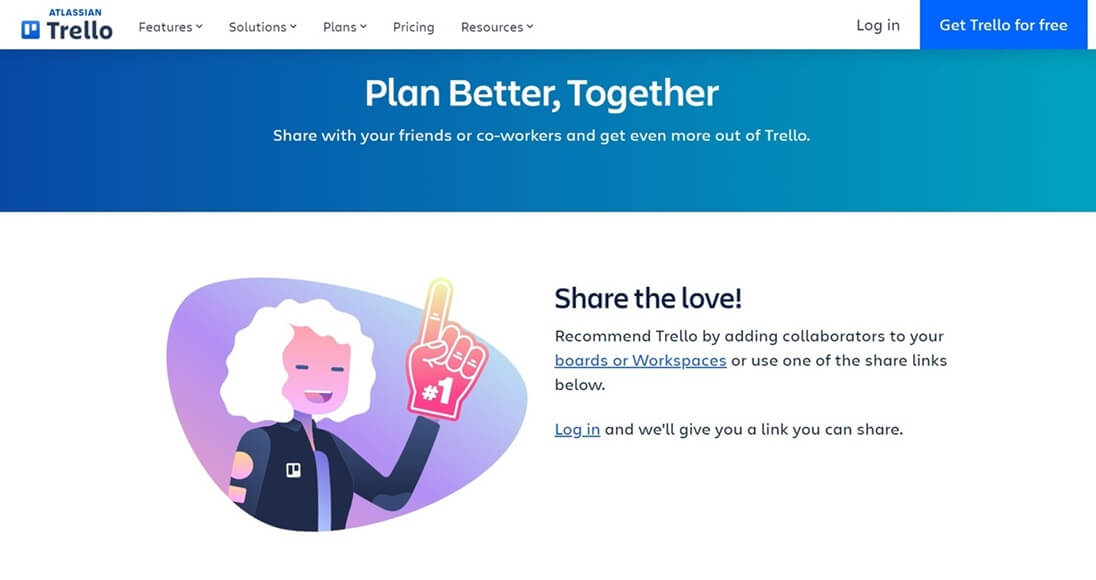
Slack
Slack is one of these fantastic examples. They started focusing on making a product that people loved using—smooth, intuitive, and easy to integrate with tools that made work much easier.
Like Trello, they offered a freemium model. The difference is that you can add anyone into a workspace you built, even clients, prompting them to create an account of their own (starting with a free plan or even a free trial).

They let different types of teams experience the product without asking for a single penny, which naturally led to people recommending it to others. They also kept the user feedback loop open, constantly improving and refining the product based on what their users loved and needed.
In just four years, Slack was valued at over $7 billion, all thanks to happy users who genuinely spread the word.
Canva
Canva made design accessible and easier to everyone, not just marketing professionals, which turned out to be a massive win. They allowed anyone to create beautiful graphics effortlessly by also offering a freemium model plus a built-in huge collection of stock images, graphics, templates, and other elements.
This easy-to-use approach led to widespread word-of-mouth promotion. Canva also constantly showcases its user-generated designs, along with its success stories, adding a layer of social proof that encourages more sharing.
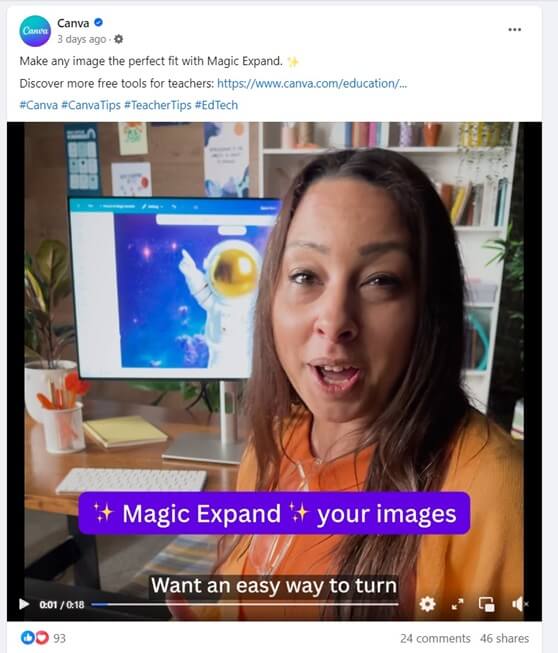
With this strategy and offering, Canva reached an impressive 10 million users.
HubSpot
HubSpot really nailed it with content marketing, which resulted in organic word-of-mouth growth. They positioned themselves as experts in inbound marketing by offering tons of valuable, free content like blogs, webinars, eBooks, and even certificate courses.
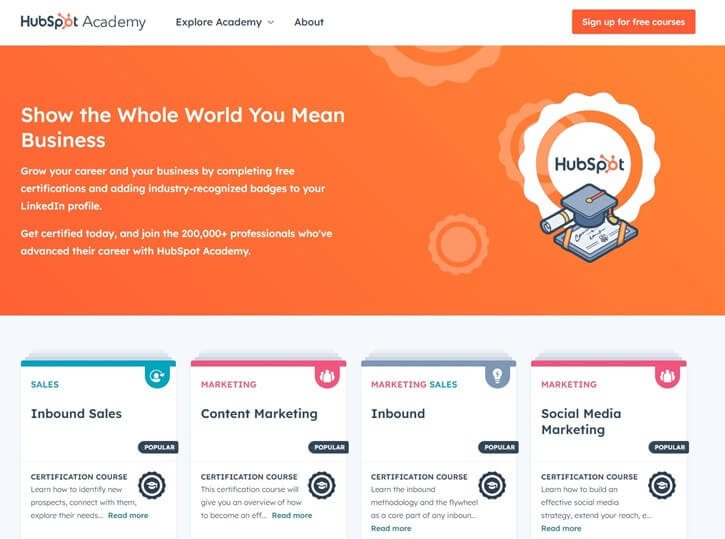
This educational approach not only built trust but also credibility, which made them a go-to resource for marketers. The wealth of useful information they provide on their platform encourages people to spread the word organically.
Only proving that giving away knowledge can pay off big time, HubSpot now boasts over 100,000 customers across more than 120 countries.
Grammarly
Grammarly has nailed the art of word-of-mouth marketing, and one of their secret weapons? The #HowIWriteTheFuture Contest. This isn’t just about their freemium model; it’s about real users sharing real stories.
Grammarly’s contest put the spotlight on actual users, featuring them in commercials that highlighted their inspiring journeys with Grammarly by their side. These stories weren’t just feel-good moments; they were powerful testimonials that resonated with audiences.
The contest rules were simple: users should log into Twitter or Instagram, follow Grammarly, and share a picture, video, or written post about how Grammarly helped them “write the future.” They need to include the hashtags #HowIWriteTheFuture and #Contest to be accepted.

This contest was a brilliant move in social proofing. By encouraging users to share their experiences, Grammarly created a wave of authentic word-of-mouth promotion. It wasn’t just about winning a prize; it was about being part of a community that values better communication.
The winner snagged a full year of Grammarly Premium, but the real victory was the campaign’s success. Run three times already, it’s clear that this contest has been a powerhouse in boosting Grammarly’s user base and spreading the word about their SaaS tool.
Notion
When Notion decided to empower influencers with exclusive perks and create a friendly community, they hit the jackpot. These ambassadors aren’t just promoting a product; they’re genuinely excited about it! And that excitement? It leads to real recommendations and organic sharing of their awesome experiences with Notion.
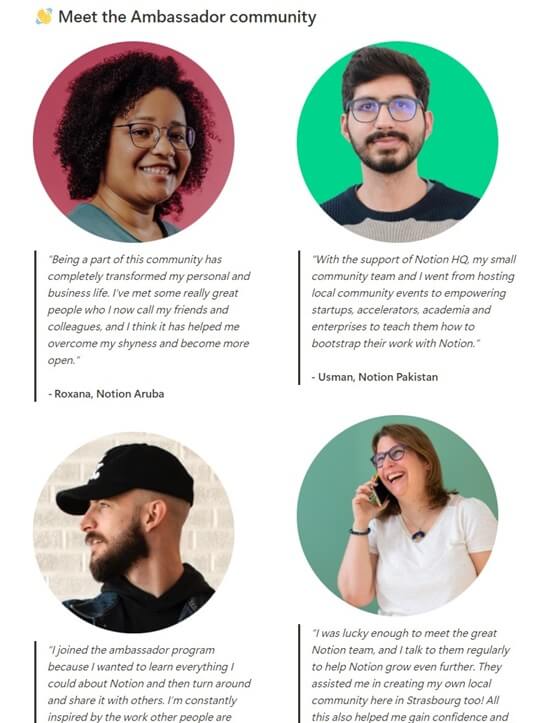
As ambassadors share their stories, they spark curiosity among their followers to dive into what Notion has to offer. It’s like a snowball effect of authentic word-of-mouth buzz! Not only does this strategy expand Notion’s reach, but it also nurtures a loyal user base that truly values and trusts the product.
Notion’s ambassador program offers several enticing benefits, including access to an exclusive community, early feature previews, priority support, event sponsorship grants, invitations to Notion events, free team workspaces, and unique ambassador merchandise.
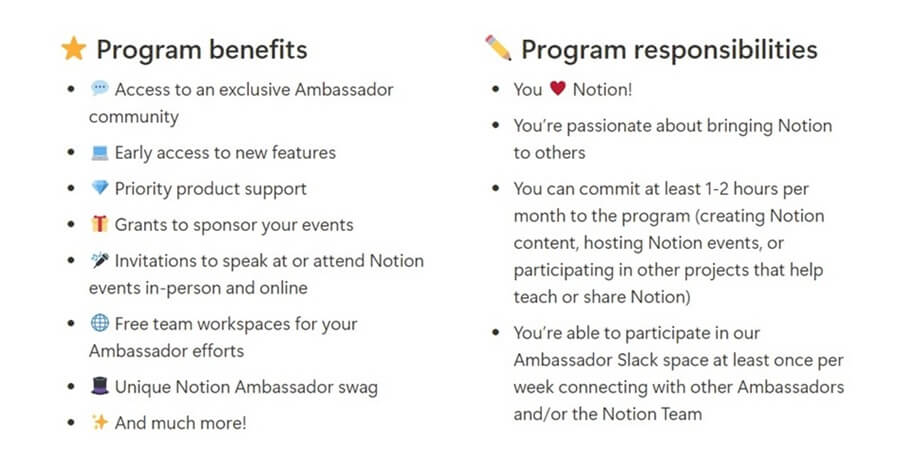
Notion didn’t stop at just offering benefits; they created a thriving ambassador community. This includes a dedicated Slack space where ambassadors are encouraged to connect at least once a week. This fosters a sense of belonging and collaboration, making the ambassadors not just promoters but passionate advocates for Notion.
HeadLime
HeadLime, the brainchild of Danny Postma, is a shining example of how natural word-of-mouth can catapult a SaaS company to stardom. Launched in 2020, HeadLime didn’t just make waves; it created a tsunami of buzz and excitement.
Danny’s first version of HeadLime was an instant hit, raking in over $60,000 in sales within just a few weeks. By December 2020, Version 2 was ready to roll. Danny cleverly dropped teasers on Twitter, hinting at the power of the new tool.
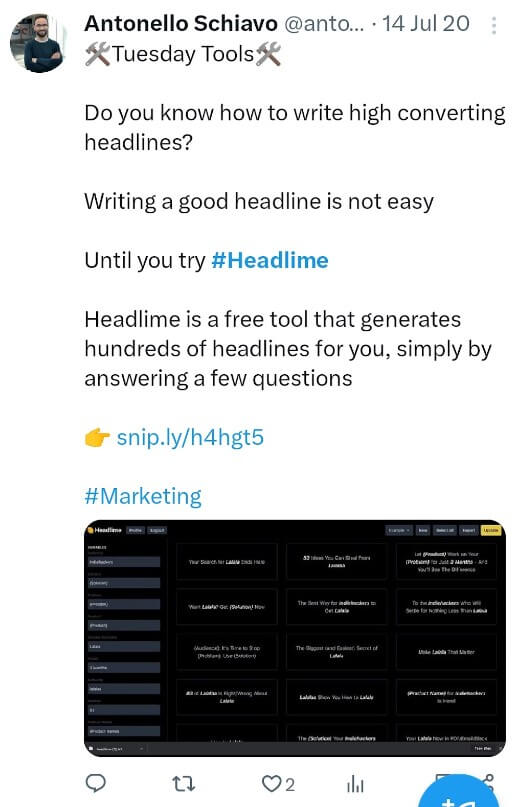
When the launch finally happened, the hype was off the charts. Revenue doubled every few weeks, skyrocketing from $1K MRR at the start of December to a whopping $20K MRR by February 2021.
Most of HeadLime’s growth was organic, thanks to Danny’s involvement in the “build in public” community on Twitter. By sharing his journey, learnings, and progress, Danny’s tweets often went viral, creating a flywheel effect.
Bigger accounts noticed, and soon enough, HeadLime was featured on TechCrunch.
Danny’s story is a testament to the power of authentic engagement and community-driven growth. By being transparent and sharing his journey, he turned HeadLime into a viral sensation, proving that sometimes, the best marketing is simply letting your passion and product speak for themselves.
The Final Thought: Embrace the Journey Ahead
Generating natural word-of-mouth for your SaaS company isn’t just a dream—it’s a highly possible and achievable reality with the right approach and a bit of strategy and effort.
Remember, your best marketing tool is your existing customers. If you treat them well and listen to their feedback, they’ll happily promote you. This creates a valuable feedback loop that improves your product and strengthens relationships.
In a nutshell, natural word-of-mouth is all about building relationships and providing real value. It’s not just a band-aid, a quick fix, but a sustainable strategy that grows your user base organically, much like tending to a garden.
So, don your gardening gloves, water those user relationships, and watch your SaaS company flourish. Your happy customers are out there, ready to spread the word; just give them a reason to shout it from the rooftops!
